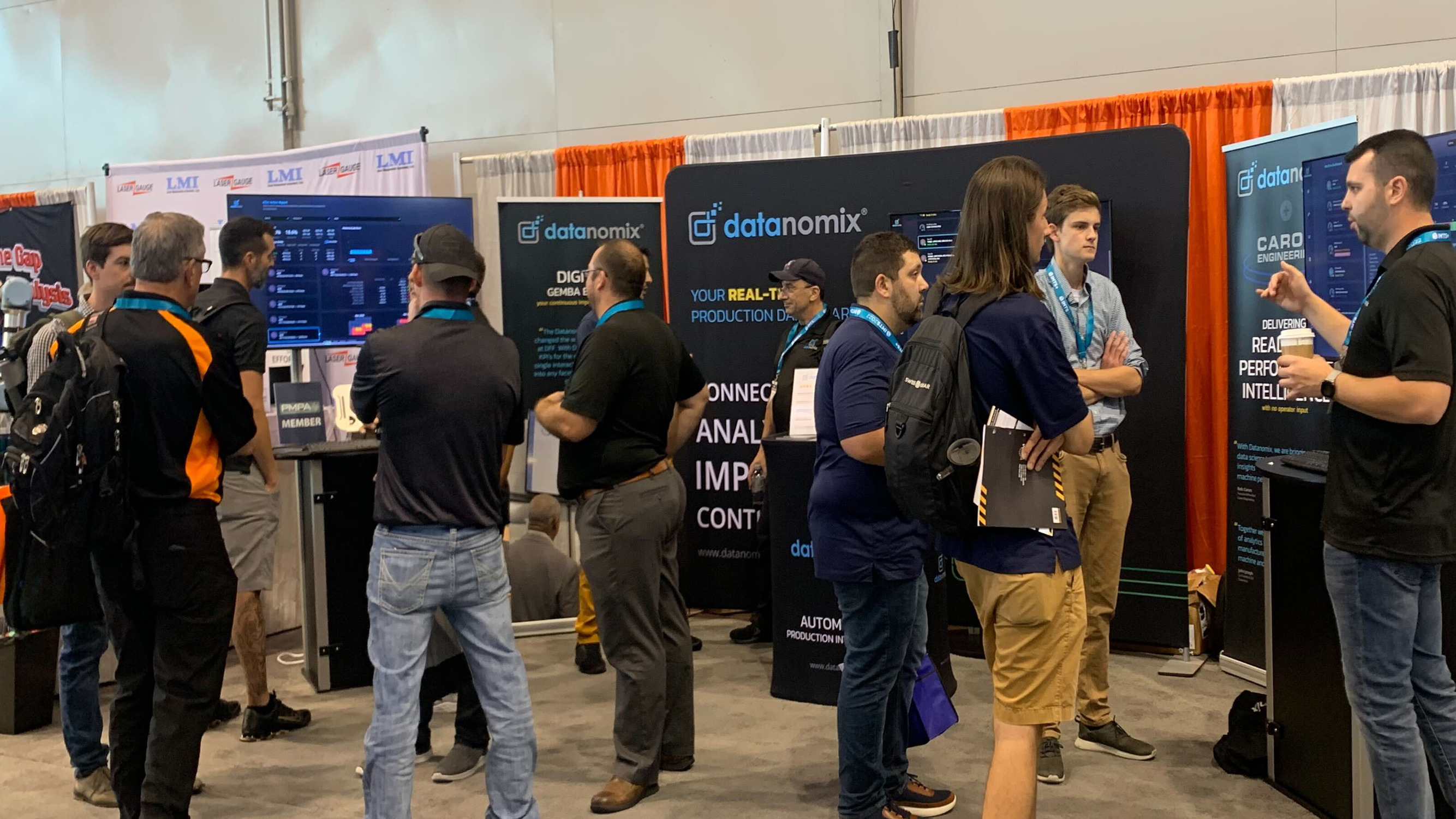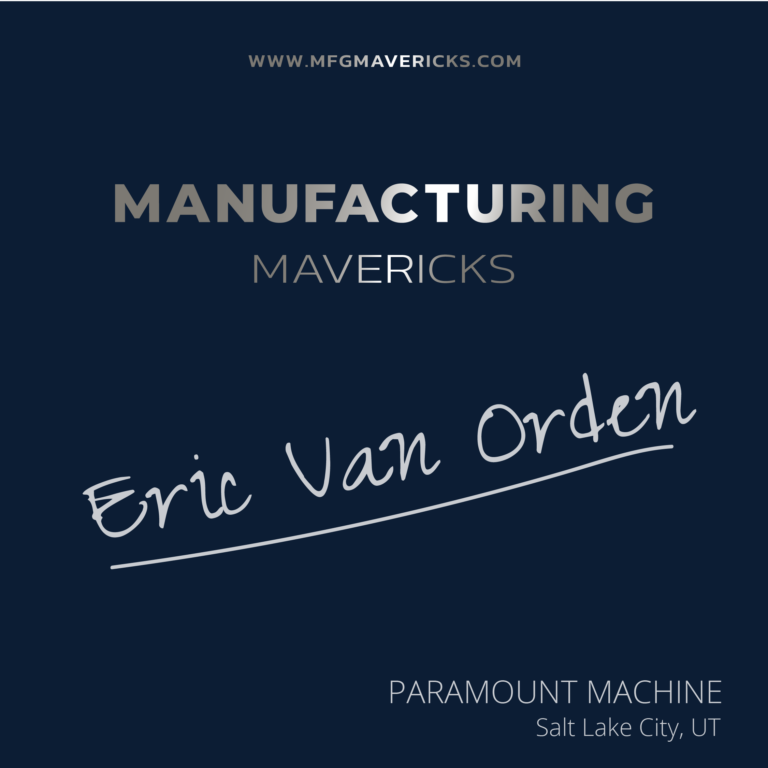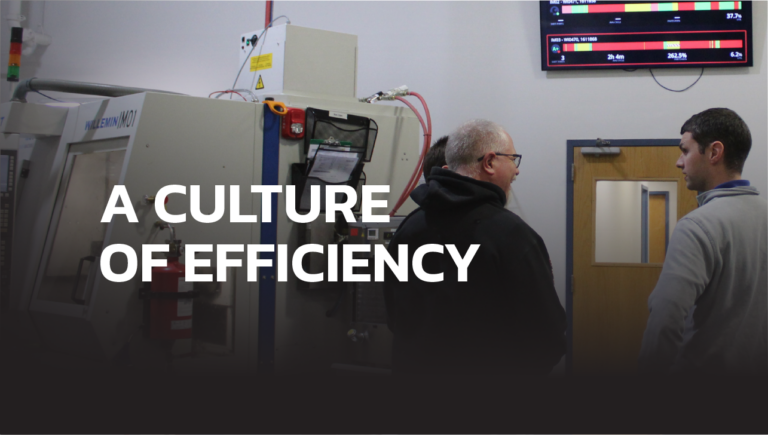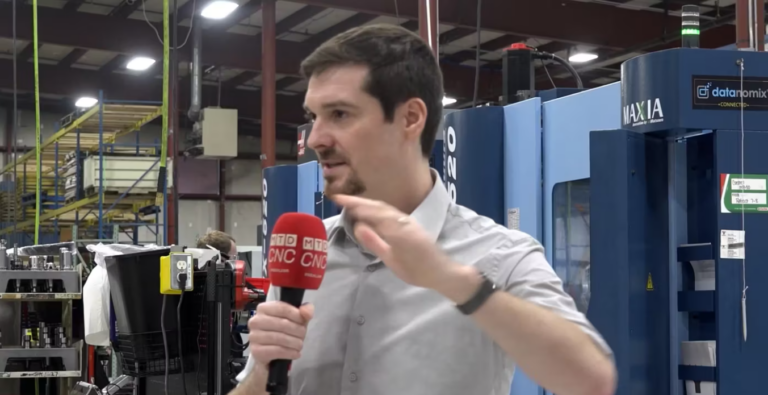That’s A Wrap On IMTS 2022
In 2022, we got our first taste of IMTS, and all we can say is…WOW! With IMTS being the grandest stage of any show we’ve been to, we had wondered how well our messaging would cut through the noise… Boy, were we surprised!
Believe it or not, 2022 was the first IMTS for Datanomix as an exhibitor. In 2018, we were still touring shop floors with factory leaders and building our product. In 2020, we were slated to exhibit, but for obvious reasons, the show did not occur. So, in 2022, we got our first taste of IMTS, and all we can say is…WOW! We have consistently had influential trade shows as a company, but with IMTS being the grandest stage of them all, we wondered how well our messaging would cut through the noise. Boy, were we surprised!
Why is your approach different?
I delivered a “Production Monitoring for Unattended Operations” session on the first day of IMTS. The talk went exceptionally well, but perhaps the best part was that a number of attendees showed up 15 minutes early while we were setting up the room. We began to make small talk, and it turned into an impromptu pre-session on general approaches to monitoring, thanks in large part to a great question from someone in the audience:
“I visited nine monitoring companies this morning. Every single one of them tells me the same story, except for you. Why? Why is your approach different?”
The simple answer is this, John Joseph and I spent months walking factory floors with owners and leaders who were using downtime reason code monitoring systems, and every system we observed was failing them. Leadership would tell us, “I know my utilization, and it feels low, but I have no idea what to do about it. I have this data, but it is meaningless. It doesn’t change how anyone behaves, and I can’t figure out what to do about it.”
That exercise caused us to conclude the utilization + reason codes = monitoring approach to the problem was fatally flawed. With rare exceptions, collecting utilization data and annotating every instance of downtime is a non-starter for typical manufacturing companies. It is an approach that fails to serve manufacturers because it still only tells you tomorrow what happened yesterday—IF you even get good reason code data in the first place, which almost nobody does. John coined the phrase, “These monitoring systems were helping people watch the business, but they were not helping them run the business.” Monitoring needed to be flipped on its head to fix this.
We were bold enough to declare that production monitoring needed to be completely redefined and that manufacturers should expect more from their monitoring systems. And even though our competition criticized and laughed at our approach, they all sent people to our booth to try to figure out what we were doing that they were not. Our “Expect More” approach is designed to tell you how your jobs are performing, how they should be performing, where you should direct your attention, which jobs are your winners and losers, and where you need to focus CI efforts, among many other things. Your monitoring system should do all of this automatically, with No Operator Input™ or work required on your part to figure out what the data means.
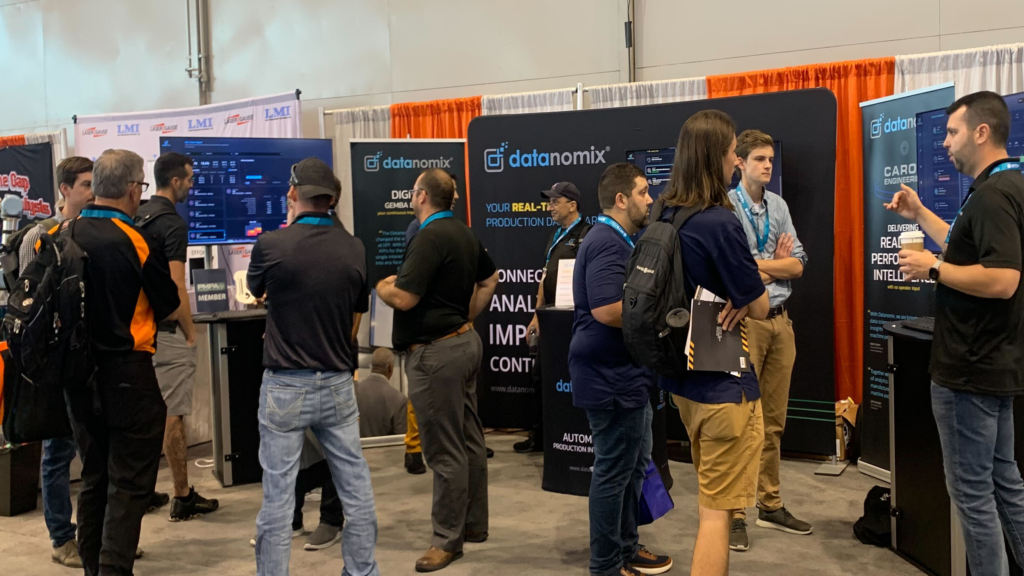
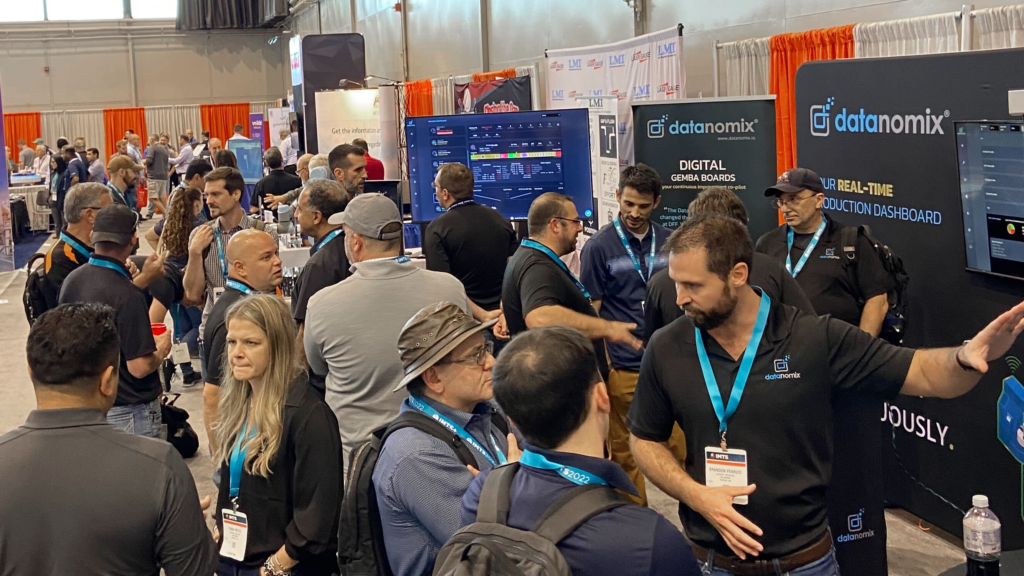
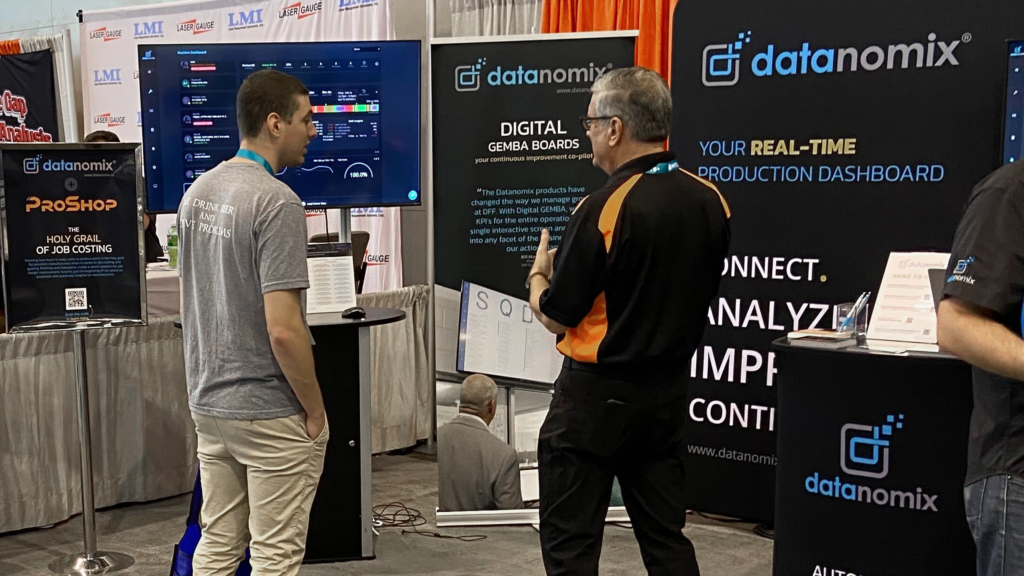
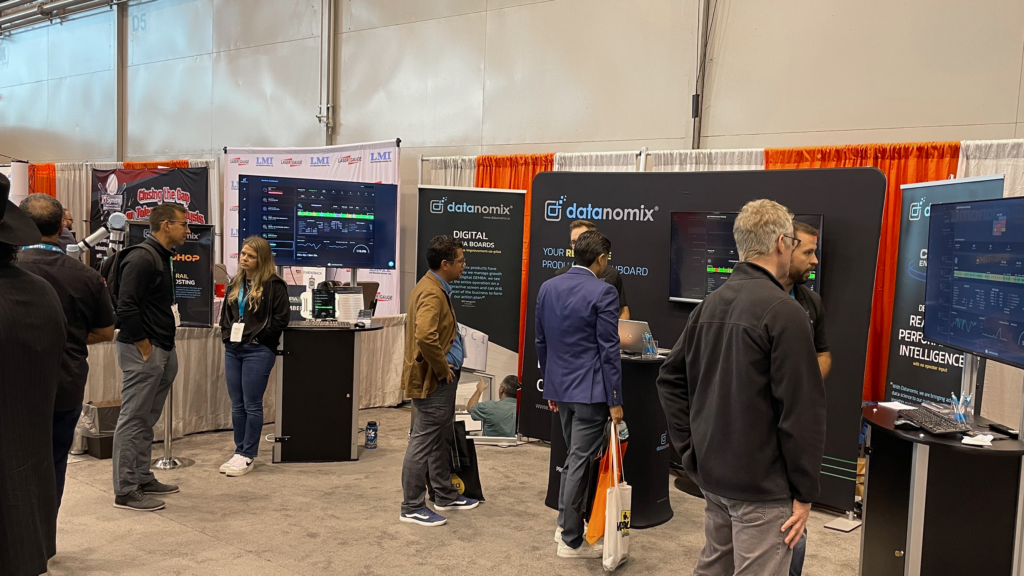
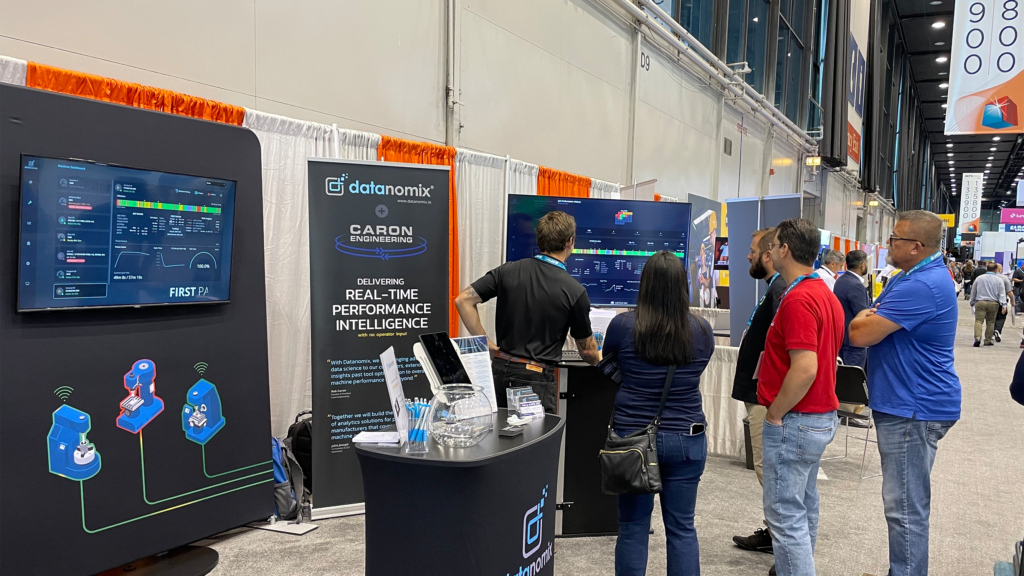
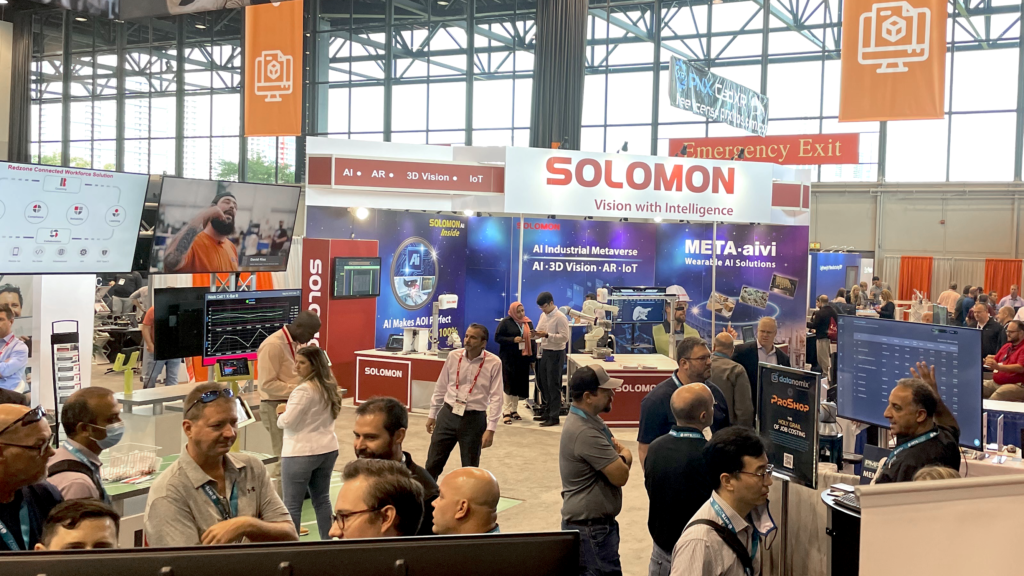
We’re gonna need a bigger boat!
We were so overrun on the show’s first day that we needed to create additional impromptu demo stations. It was not uncommon for us to have several demos running in parallel, with folks queued up waiting for their turn. Why were people coming to see us? The comments from visitors were pretty consistent:
“I love the no operator input approach”
“I’m not getting what I need to out of my current monitoring system” (features, support, quality of data)
“I see the strongest companies are partnering with each other and I need to get everything all of you have to offer together”
“I know someone using your product and they told me I had to come see you”
Some of our favorite prospect interactions from the week:
“We have a monitoring system. It doesn’t tell us very much. This is the first time I’ve ever seen a system that is prescriptive and I can immediately interpret what the data says to me about what I need to go do.”
“All of these monitoring systems always ask us to do one more thing. I love your no operator input approach.”
“I just connect ProShop and you’ll show me which jobs make money and lose money compared to standard? Where have you been all my life?”
“You guys make a standard for cutting time and touch time for every part number I run? I’ve never seen another system like this.”
“Sold. Scan my badge. Let’s chat next week.”
What does it mean to be in our boat?
A truly awesome experience for our team at IMTS was an in-booth live interview with multiple customers of ours conducted by Tony Gunn and the team from MTDCNC. Two shop owners—Mike Payne of Hill Manufacturing and Jack Russell of Rolar Products—shed light on their shops, culture, technology views, and experiences with Datanomix.
Jack and Mike went all-in with their own money to buy their first shop later in their careers. Jack was an executive for an automotive supplier, and Mike was a software guy-turned-private equity investor. After they got their hooks into their first shop, they wanted more, so both have gone on to acquire other companies, incorporate them into their culture and brand, and continue to grow machine count, employee count, and revenue. They credit Datanomix with providing the insight required to ensure they are running to plan and figure out which jobs to work on to harvest improvements. Mike gives an excellent overview of a machine running on the monitor behind him, which isn’t even his machine! It’s a great testament to how simple it is to understand how production runs with Datanomix, even if you are looking at somebody else’s data!
Emerging Partnerships
Another major theme for us at IMTS was partnerships. We’ve been on a tear lately, most recently with the announcement of ProShop ERP integration for job costing, Flexxbotics integration for monitoring Universal Robots, and further integration with Caron Engineering’s ToolConnect data to assist in predictive tool life problems. Rob Caron and I spoke during a Wednesday session around predictive tool life and predictive quality—two very hot topics in the arena of unattended production and automation.
To our friends at Caron Engineering, ProShop ERP, Flexxbotics, and others—thank you for the honor of your collaboration. Our approach to integrations is to only work with like-minded companies to deliver an outcome – an actual, tangible product feature resulting from the integration. Not simple connectors to data sources with a hearty “good luck,” but real solutions to real problems. Integrations are always a two-way street, and we thank you for your trust and friendship.
Our Customers Make Us Possible!
To our customers and soon-to-be customers—thank you for your support, trust, feedback, and collaboration. You are running your business with Datanomix, not just passively watching it.
The Datanomix approach is not a destination; it is a process of continually walking side-by-side with everyday manufacturers to make sure that any critical ailment that is experienced throughout the manufacturing day is not only solved but automated, standardized, and made into a workflow that supports the target behaviors on your shop floor.
